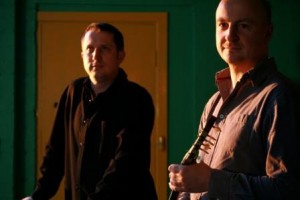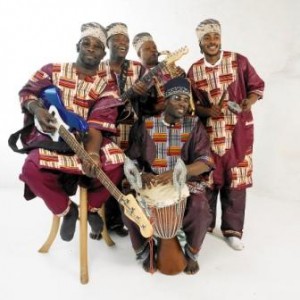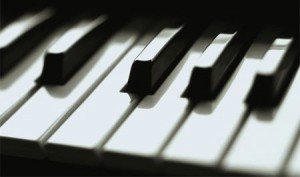In a recent article, composer Jonathan Harvey proposes abandoning the idea of conventional audience behaviour at concert halls, in a bid to attract younger audiences.
 I’ve written previously about expected audience behaviour, as it’s important to make music accessible to everyone without burying it beneath all manner of stultifying conventions that will almost certainly put people off, especially younger audiences who are potentially the Ticket-buyers of Tomorrow. The almost religious state of obeisance required to sit still and attentively through classical repertoire is alien to those who attend jazz gigs and rock concerts. Clap in the wrong place during a symphony, and you’re greeted with icy stares or patronising glances: clap after a particularly fine instrumental improvisation at a jazz gig, the musicians will nod their thanks.
I’ve written previously about expected audience behaviour, as it’s important to make music accessible to everyone without burying it beneath all manner of stultifying conventions that will almost certainly put people off, especially younger audiences who are potentially the Ticket-buyers of Tomorrow. The almost religious state of obeisance required to sit still and attentively through classical repertoire is alien to those who attend jazz gigs and rock concerts. Clap in the wrong place during a symphony, and you’re greeted with icy stares or patronising glances: clap after a particularly fine instrumental improvisation at a jazz gig, the musicians will nod their thanks.
Harvey advocates amplifying music in performance, standard practice in rock and jazz gigs but greeted with a sharp intake of breath at classical concerts.
“There is a big divide between amplified and non-amplified music. The future must bring things that are considered blasphemous, like amplifying classical music in an atmosphere where people can come and go … and certainly leave in the middle of a movement if they feel like it.”
Leave in the middle if they feel like it ? Blasphemous indeed, perhaps – to some. But precisely this premise was part of Einstein on the Beach by Philip Glass and Robert Wilson – written in 1976, the opera lasts for around five hours, and consists of nine scenes linked by short interludes known as ‘Knee Plays;’ there is no plot, and the audience members are free to enter and leave when they wish.
Harvey has composed in the electro-acoustic field as well as traditional choral and instrumental works: Le Tombeau de Messiaen is composed for piano and tape; Mortuos Plango, Vivos Vocos whizzes the tenor bell of Winchester Cathedral and voice of a boy soprano (Harvey’s son) around in space, whilst Speakings portrays the birth, development and establishment of language and is written for orchestra and live electronics. His choral compositions range from the dancing Virgo Virginum to the beguiling mesmerism of The Angels.
There is of course a divide between audiences for classical concert repertoire and jazz and rock lovers: but as composers such as Mark-Anthony Turnage and Tansy Davies are proving, it’s not an insurmountable one. (Frank Zappa’s The Yellow Shark, anyone ?) And if you go to a concert given by groups like Icebreaker or to hear music by Steve Reich, amplification is almost de rigeur.
Harvey makes the prediction that “if orchestras and conductors hang on to the orthodox method of performance they will end up playing to empty halls.” Whilst one hopes fervently that this will not be the case, there is surely some room to accommodate new ways of listening to music, in a way that will attract younger audiences: isn’t there ?






 United across centuries: weird composer Erik Satie and Brit pop group Take That. Surely not ?
United across centuries: weird composer Erik Satie and Brit pop group Take That. Surely not ? This sense of desperation is also captured to great effect in the video to Take That’s
This sense of desperation is also captured to great effect in the video to Take That’s 